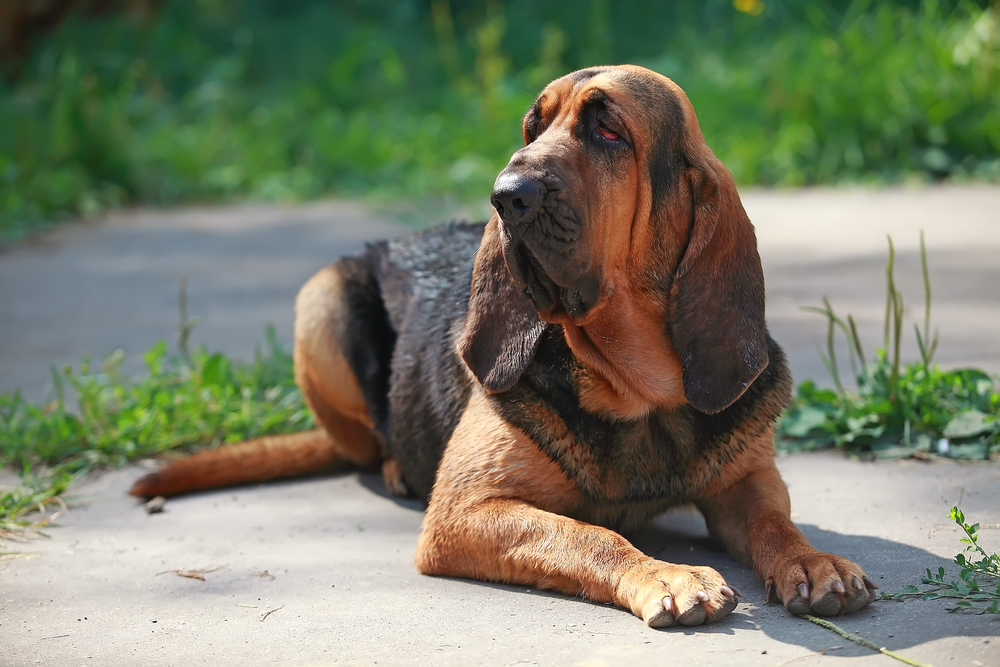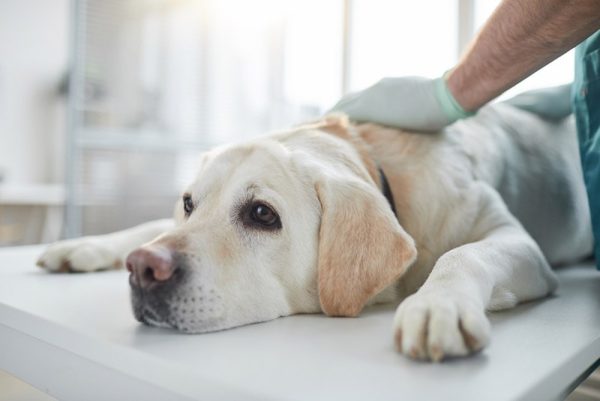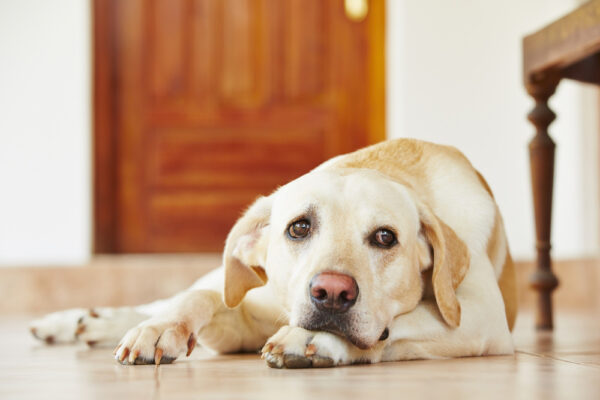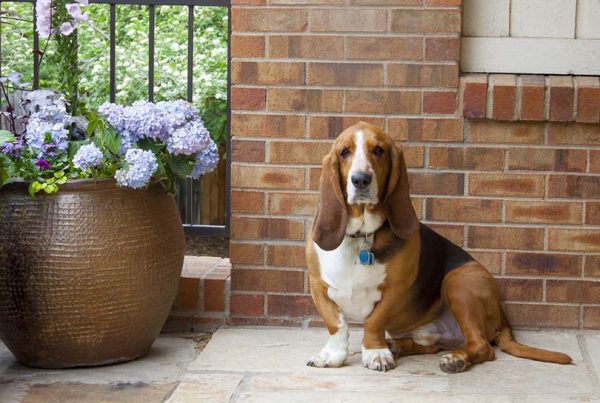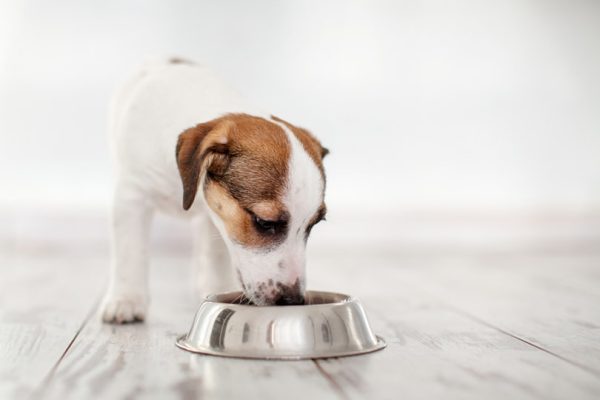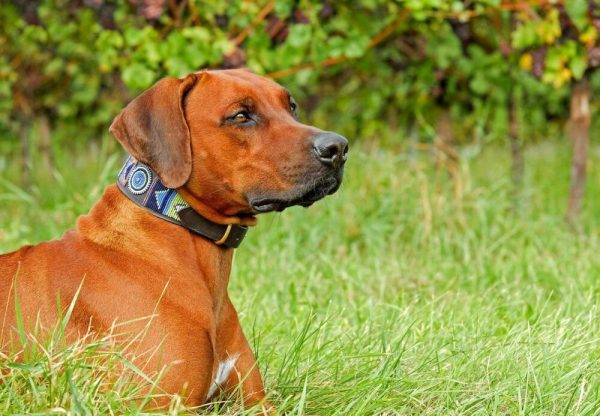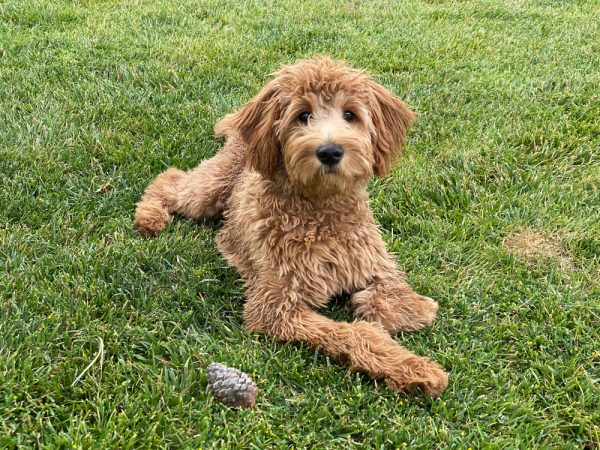In this article
View 8 More +Bloodhounds do one thing better than almost any other dog breed out there, and that is finding people who are either hiding or lost. While on the trail of scent that they’re after, they can be stubborn and determined. However, when not “on duty,” the average Bloodhound dog breed is docile, patient, and kind. Are you wondering what it might be like to own a Bloodhound or just interested in what the breed is all about? Read on to learn all you should about this mighty dog!
Breed Overview
Height:
23–27 inches
Weight:
80–110 pounds
Lifespan:
10–12 years
Colors:
Black and tan, liver and tan, red
Suitable for:
Active families, search and rescue workers, houses with fenced yards
Temperament:
Affectionate, even-tempered, patient, gentle, stubborn, independent
This large dog breed stands up to 27 inches tall and weighs up to 110 pounds (give or take) when fully grown. The first thing that comes to mind for many people when they think of the Bloodhound is a dog that is more suitable for working than for living in a household. However, it might be surprising to know that under the right circumstances, this breed can make an excellent family pet.
Bloodhound Characteristics

Bloodhound Puppies
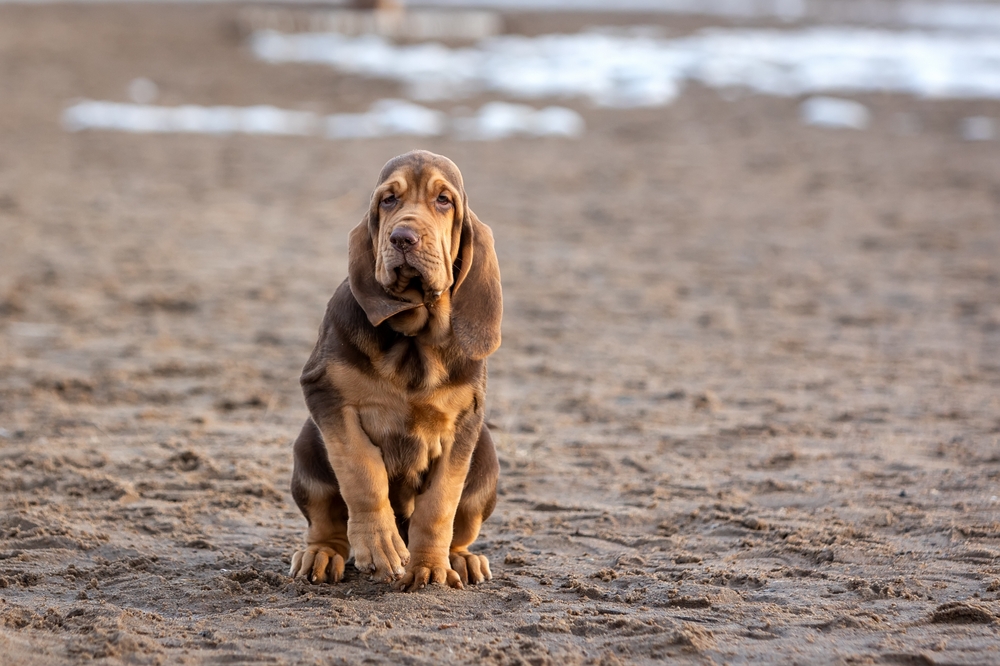
Bloodhounds are small when they are born, but they grow quickly during the weeks and months after birth. Most are larger than the average dog before they are even 1 year old. So, as a new Bloodhound owner, you should embrace and enjoy puppyhood because it will go by fast, and you’ll be left with a huge dog that while a great companion, will no longer display any puppy characteristics.
Puppyhood is a vital time in a Bloodhound’s life because it’s when they should learn how to get along with a variety of people and animals and to respond to important commands that will help keep them and others safe as time goes on.

Temperament & Intelligence of the Bloodhound 🧠
The Bloodhound is a smart breed that can hold their own when it comes to getting along in life and finding things by scent. They are typically patient, laidback, and adaptable to most social situations when they are well-socialized from a young age. Their mild-mannered personality can be surprising, as it doesn’t seem to match their large, overbearing physical appearance.
They are independent but don’t enjoy spending time alone at home. Therefore, separation anxiety can develop if household members are gone most of the day all week long. These are high-energy dogs, but they can maintain a calm and relaxed mood while spending time in the house if they can get outdoors for long walks and other types of exercise each day.
Are These Dogs Good for Families? 👪
The Bloodhound can be a great family pet due to their calm, patient, and friendly demeanor. They are typically gentle with children, and they don’t mind sharing a household with other animals if socialized to do so when puppies. They should be supervised when around small animals and young children, though, simply because their large size can cause actions that can result in accidental injuries.
Children should be taught obedience commands early so they can manage their Bloodhound’s behavior both at home and in public settings. A well-fenced yard is necessary, as they need to spend time outdoors exploring. Just keep in mind that they’re excellent diggers and escape artists, so the fence must be extremely durable, tall, and built into the ground.
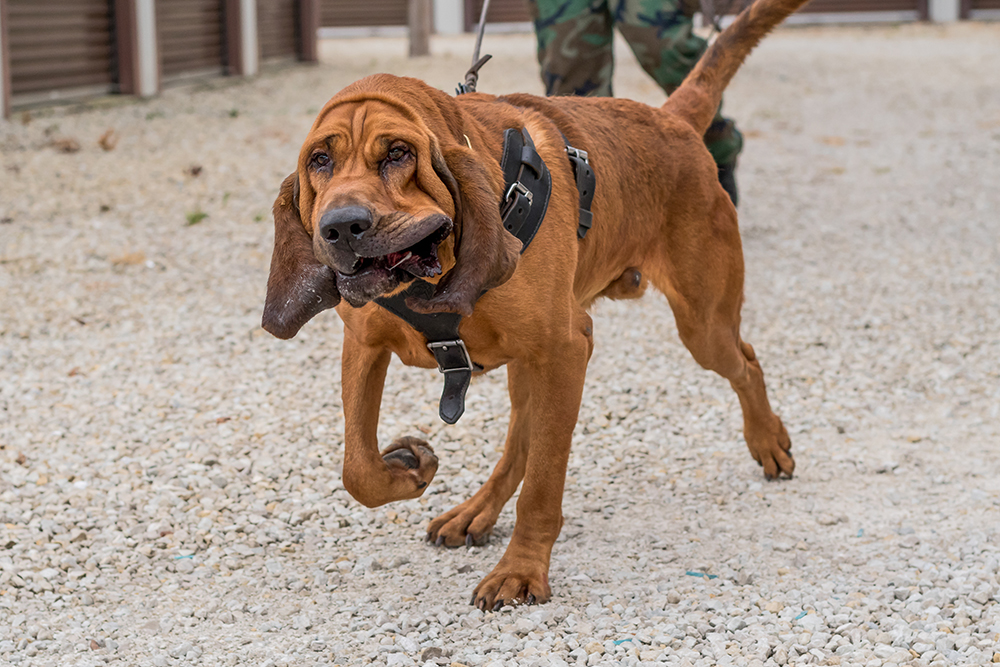
Does This Breed Get Along With Other Pets? 🐶 😽
The Bloodhound can get along well with other household pets, but that is not always the case. If they are not socialized as puppies, in the sense of learning to meet new animals and spend time with them, they may not take well to a new pet coming into the house. If well-socialized, they can head to dog parks and other social situations and get along great with other animals.
However, they can injure small dog breeds and puppies while playing due to their sheer size, so supervision and a controlled environment are vital.

Things to Know When Owning a Bloodhound
Now that you know what to expect from the Bloodhound in terms of temperament and personality, you should understand what it really means to take care of this breed if you are thinking about owning one. Here is what you should know about topics like grooming, diet requirements, and exercise.
Food & Diet Requirements 🦴
The Bloodhound is a big dog, so they can eat up to 8 cups of dry commercial food each day! They tend to do the best with high-quality food that is designed specifically for large breeds and for the life stage that they are in. The main ingredients should be real meat, whole grains, and veggies.
It’s best to check with your veterinarian about the type and amount of food that you should be feeding your Bloodhound, both as a growing puppy and as an adult. If a Bloodhound starts experiencing problems with their joints, supplements like chondroitin and glucosamine fish oil can be helpful.
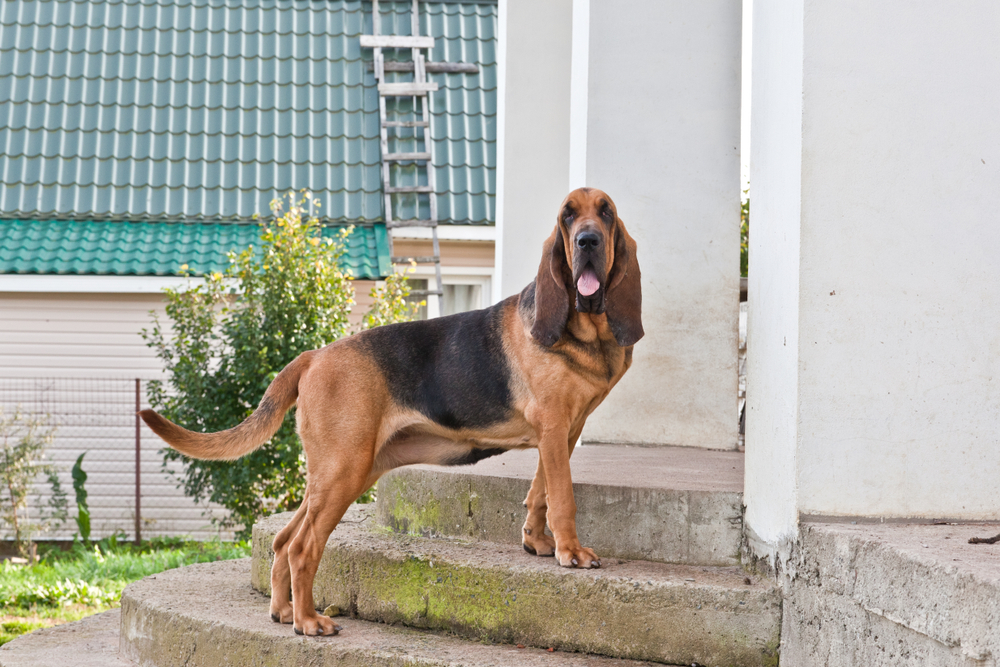
Exercise 🐕
Although Bloodhounds have a reputation for being lazy when they aren’t tracking a scent, these large dogs are active and require daily exercise to stay happy and healthy throughout their lives. They should take part in long daily walks of at least 30 minutes in length every day of the week. They also need outdoor play and exploration time to maintain mental and physical satisfaction.
Fetch, swimming, ocean visits, and hiking trips are all excellent adventure/exercise options for the Bloodhound. This breed can do indoor activities when it’s raining outside to expel energy, though indoor options should be thought of as supplemental and emergency exercise.
Training 🎾
Every Bloodhound must be trained to ensure that they behave in a safe and non-threatening manner as they age into a fully grown adult. This breed is docile, patient, and pleasant in general. However, they are also independent and tend to have a stubborn streak. Since they are headstrong in their ways, they need direction to help keep them on track, and training is the way to make that happen. Bloodhounds should start obedience training (sit, come, stay, etc.) by about 8 weeks of age.
Training should be practiced regularly throughout their lives. First-time Bloodhound owners and dog trainers should seriously work with a professional trainer until they feel confident in their ability to lead and maintain control over their dog.
Grooming ✂️
Bloodhounds happen to have dense, short coats that do not shed much throughout the year. However, they are known to heavily shed a couple of times a year when the seasons change to make room for new hair growth. A weekly brushing or combing should keep shedding to a minimum, but daily brushing may be necessary when shedding spurts are noticeable.
These dogs should get enough outdoor exercise so their nails will stay naturally trimmed. However, a nail grinder can be utilized when necessary. Teeth brushing should be a priority, though not all Bloodhounds will submit to the activity easily. So, dental chews and other veterinarian-recommended options can be implemented as supplemental care.
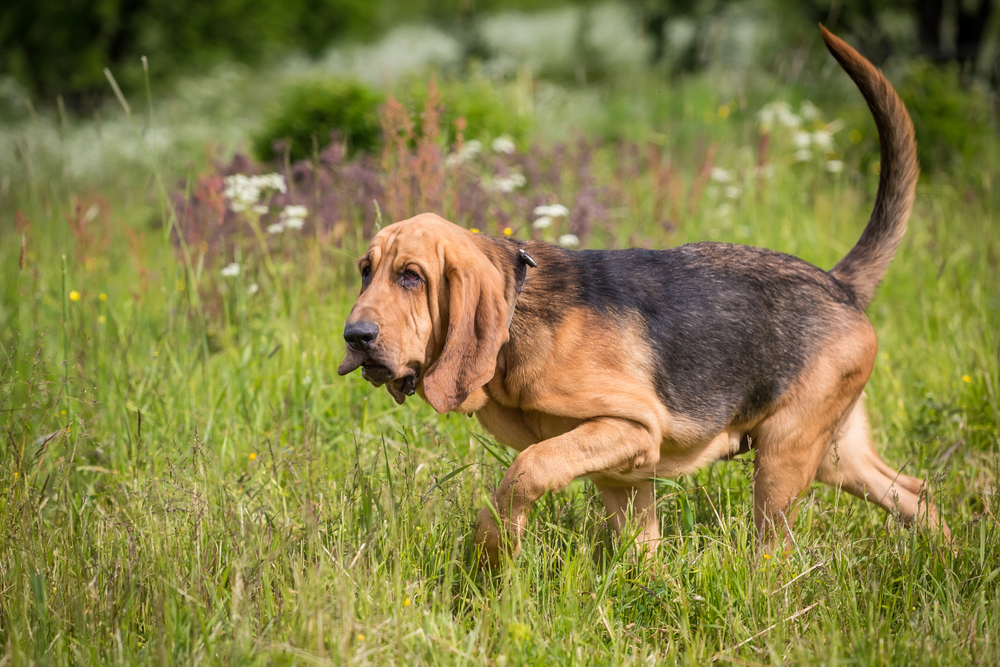
Health and Conditions 🏥
The average Bloodhound is generally a healthy dog breed, but there are specific health conditions that they could be prone to, depending on their lineage and other factors. One of the most common problems that Bloodhounds face is bloat, or gastric dilatation and volvulus. This condition happens when a dog’s stomach fills up with gas.
It most commonly affects large, deep-chested dogs like the Bloodhound, but it can affect any dog breed and type. When it progresses, so much gas fills the stomach that it twists up. When this happens, the entrance and exit of the stomach are compromised. Without immediate treatment, the condition is life-threatening.
Other common health conditions to be aware of include the following.
- Ear infections
- Skin rashes/irritation
- Hip/elbow dysplasia
- Heart problems
Male vs. Female
Both male and female Bloodhounds are laidback, patient, and friendly animals. The only real differences seem to be anecdotal. Many owners find that females are a bit more independent than males, while males are easier to potty train. Females tend to maintain their independence and territorial instincts after being spayed, while males seem more dependent and docile after being neutered. There are no specific traits that are proven to be different between sexes.
3 Little-Known Facts About the Bloodhound
1. Bloodhounds Were Utilized by Police to Find a Serial Killer
While the German Shepherd is the most common type of police working dog in existence today, the Bloodhound is notorious for helping police catch serial killer Jack the Ripper during the late 1880s. When police were desperate to find the killer, they were recommended by a breeder to make use of Bloodhounds to track him down.
At first, the police were skeptical, but the London Metropolitan Police decided that they were running out of options and finally accepted the help of a talented Bloodhound. After doing so, they were able to locate and capture Jack the Ripper.
2. A Bloodhound Was Once a Famous Hillbilly
A Bloodhound named Stretch was in “The Beverly Hillbillies,” and played a dog called “Duke.” Duke was a lazy and lovable character on the ‘60s show. Stretch, the actor, lived a long life and passed away when he was 16 years old. When this happened, his son took over his television show and movie acting roles.
3. The Bloodhound Has More Scent Receptors Than Any Other Dog Breed
Many dog breeds, such as the Beagle and Basset Hound, are known for having a powerful sense of smell. However, Bloodhounds take the prize when it comes to scent receptors. They have more than 300 million of them, which is many times more than that of other dog breeds and approximately 40 times the number of receptors that humans have.
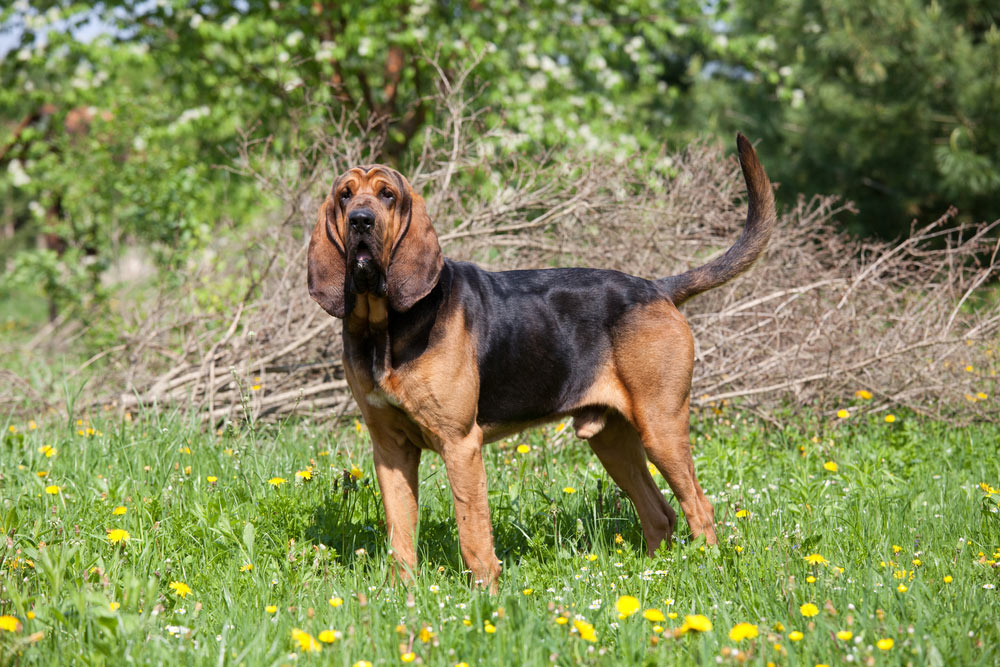

Final Thoughts
The Bloodhound dog breed is a large, exuberant, and patient dog that can fit well into a family environment if their exercise and mental outlet needs are met. They make excellent working dogs for police and fire departments too. No matter your intentions, learning about the Bloodhound is a fun way to enhance your knowledge and decide whether this breed is the right one for your family and household.
Featured Image Credit: Degtyaryov Andrey, Shutterstock
